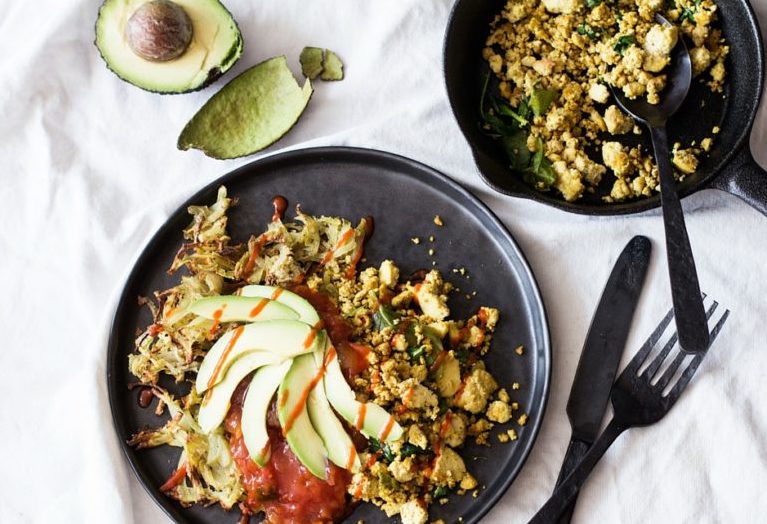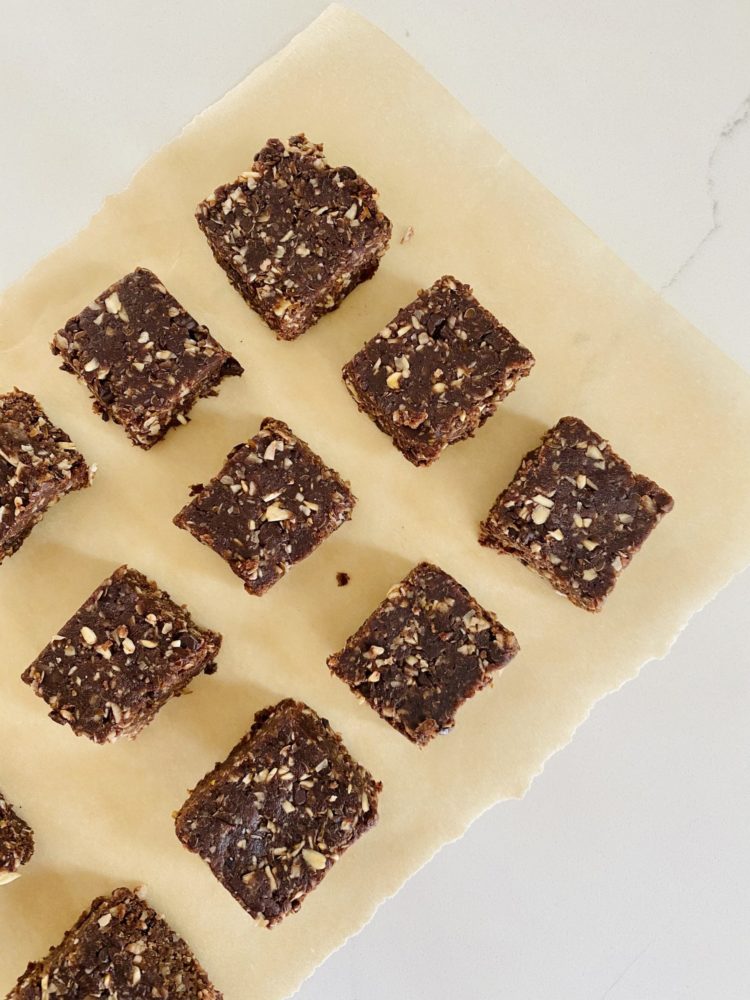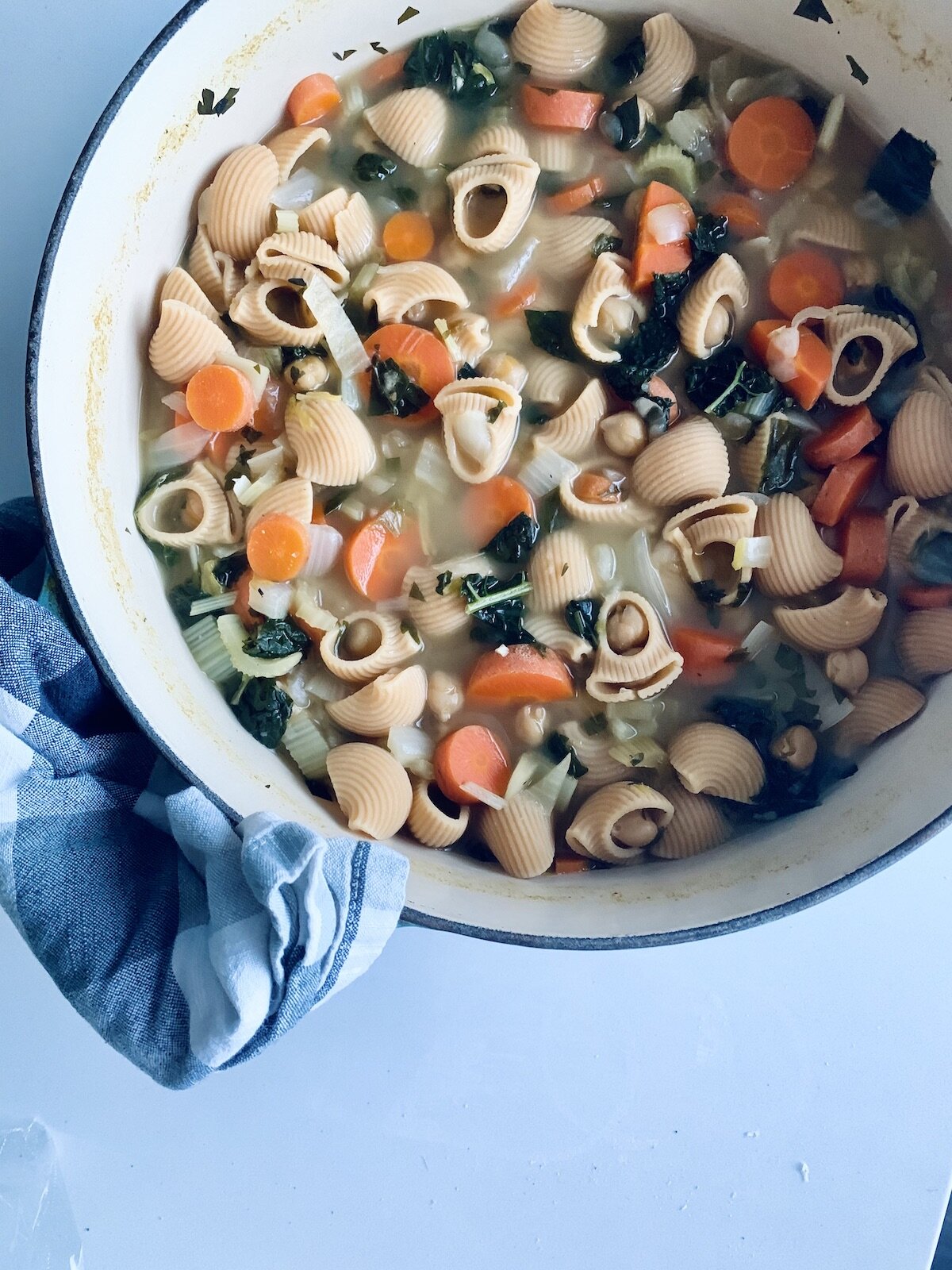Whether your go-to is a pint of ice cream, bag of chips, or chocolate anything (me!), most of us have identified as an emotional eater at some point. It’s a comfort that many of us turn to in our moments of strong emotions or times of stress. In this article we’re talking about what emotional eating is, when it’s actually a good thing (seriously!), and how to stop emotional eating when it’s doing more harm than good.
Before diving into strategies, it’s essential to understand that emotional eating isn’t just about food; it’s a signal of our underlying emotional state. It’s a symptom of something deeper going on inside of us. Also, recognizing that emotional eating is a normal human response and learning to observe your own actions related to emotions and food with nonjudgemental awareness is key. With that in mind, let’s dive in to all things emotional eating!

What is emotional eating?
Emotional eating is a behavior that involves consuming food as a way to manage and soothe unwelcome or difficult feelings rather than eating to satisfy physical hunger. According to the intuitive eating framework, emotional eating is recognized as an eating response to a range of feelings, whether it’s stress, sadness, boredom, or even joy. Typically it involves overeating foods, mindless eating, or eating foods that you’ve previously deemed “bad” or off limits. It often puts you in a cycle similar to the diet cycle – binging, guilt, restriction, and binging again the next time a particular feeling arises.
While emotional eating is often seen as negative or problematic, it is important to acknowledge that it isn’t always a bad thing (more on this below!). It is so natural for our emotions and food to be connected. However, relying solely on food as a coping mechanism can lead to a cycle of unhealthy habits and negative effects on both our physical and emotional well-being.
Emotional hunger vs. physical hunger
The opposite of eating for emotional reasons is eating for physical reasons, or simply eating because you are physically hungry. Let’s look at the difference between these two types of hunger.
Emotional hunger and physical hunger – what’s the difference?
Emotional hunger typically arises from a desire to fulfill emotional needs with food. It is often sudden and driven by specific emotions such as stress, boredom, sadness, or even happiness. This type of hunger can lead to food cravings for things that you associate with comfort or pleasure. Unlike physical hunger, emotional hunger is not satisfied even when you feel your fullness cues set in. This can lead to feelings of guilt or shame after eating, as well as physical discomfort.
On the other hand, physical hunger is the body’s signal that it needs energy. It develops slowly over time and is tied to when and what you last ate. When you you eat in response to your physical hunger cues, you eventually feel the sensation of fullness and take it as a cue to stop eating. Physical hunger is not tied to specific emotions but rather to the body’s need for nutrients and calories to function properly.
Next time you feel the urge to eat, take a moment to assess whether you are experiencing emotional hunger or physical hunger, and choose a response that aligns with your true needs. It is common and normal for these two types of hunger to show up at the same time. That’s okay! Try to think about the foods that will both satisfy you physically and provide the comfort you need. For example, when I am feeling down, I often turn to my favorite soup recipe that both nourishes and comforts me.
Emotional Eating is Not a Food Problem
Contrary to what many might believe, emotional eating isn’t primarily a food problem, but rather a self-care issue. Therefor, it can’t be solved with food-related solutions that you often see suggested. Burying the tub of ice cream in the back of the freezer or hiding the chips on the highest shelf are NOT effective strategies to cope with your underlying chronic stress or need for rest.
When I say it’s a “self-care” problem, what I mean is that you are using food to displace caring for yourself in some way. For example, you aren’t setting a necessary boundary with someone, or you aren’t taking the rest you need, or you aren’t addressing traumas or difficult emotions that need your attention. A self-care problem needs a self-care solution! Although they may seem unrelated, having that difficult talk with your partner about helping you with household responsibilities may be the remedy for your desire to reach for the ice cream when you feel overwhelmed.
Why does it happen?
Emotional eating occurs as a response to triggering feelings rather than physical hunger. You may turn to food for comfort, distraction, or numbing during times of stress or negative emotions such as sadness, loneliness, or boredom. Unlike physical hunger that builds gradually, emotional hunger is sudden and feels urgent. The relief that eating provides is temporary, but it can create an unhealthy cycle where food becomes a coping mechanism for dealing with uncomfortable emotions.
Why Emotional Eating Happens:
- Stress: Heightened stress levels increase the production of cortisol, a hormone that can trigger cravings for salty, sweet, or high-fat foods.
- Emotions: Eating can be a way to suppress or soothe negative emotions like anger, fear, sadness, anxiety, or loneliness.
- Habits: Turning to food during emotional times can develop into a habit, reinforcing the emotional eating behavior.
- Social Influences: Group settings, childhood experiences, and family traditions that involve eating can also contribute by linking food with comfort or reward.
- Boredom or Feelings of Emptiness: Food can be a distraction or fill a perceived void.
When is emotional eating okay?
When clients come to me an want to learn how to stop emotional eating, they’re surprised when I tell them it isn’t always a bad thing! Though often cast in a negative light, emotional eating isn’t inherently bad. It’s a nuanced behavior that can be interwoven with positive experiences and traditions. Take, for example, the joy of savoring a slice of cake on your birthday. This act transcends mere physical nourishment – it’s a celebration, a cherished ritual that adds sweetness to marking another year of life.
Most of our eating habits are shaped by more than just physical hunger. We find solace in comfort foods that evoke fond memories, connect us with loved ones over a shared meal, or honor the rich tapestry of our cultural heritage. Listed below are other valid and often joyful reasons why we might eat for emotional reasons:
- Celebration: Enjoying special foods during festivities or personal milestones.
- Memories: Eating meals that remind us of loved ones, special places, or cherished past experiences.
- Comfort: Choosing foods that provide a sense of solace during stressful times, illness, or rainy days.
- Connection: Sharing meals to connect with loved ones, strengthen social bonds, and foster a sense of belonging.
- Culture: Enjoying traditional cuisines to maintain a connection with your cultural identity.
Understanding that emotional eating spans a spectrum allows us to foster a healthier relationship with food, recognizing that emotions can enrich our eating experiences rather than simply triggering overindulgence.
Is emotional eating an eating disorder?
Emotional eating is a common behavior that many people engage in to cope with difficult emotions. However, the question arises: is emotional eating considered an eating disorder? While emotional eating itself may not always be classified as a specific eating disorder, it can be a precursor to developing disordered eating habits or it can accompany other eating disorder behaviors.
Disordered eating encompasses a range of behaviors related to food and eating that may not meet the criteria for a diagnosed eating disorder, such as anorexia nervosa or bulimia. Emotional eating falls under this category as it involves using food as a way to cope with emotions rather than eating in response to physical hunger cues.
When to seek help:
If you find yourself turning to food for comfort on a regular basis, it may be helpful to seek support from a healthcare professional or mental health professional. They can help you explore healthier coping mechanisms for dealing with emotions, develop a more balanced relationship with food, and get any additional help you may need. If you feel like you may be suffering from disorder eating or an eating disorder, here are some resources to find help. Remember, reaching out for help is a brave and important step towards improving your overall well-being.
How To Stop Emotional Eating
If you suspect that you are frequently turning food at the expense of taking care of your seminal world, try these strategies for how to stop emotional eating.
Take a pause
The simple but powerful act of pausing and taking a deep breath the moment you feel the urge to reach for food can change the entire course of your emotional eating patterns. Creating this tiny moment of space gives you the ability to respond to the situation skillfully instead of impulsively reacting to your urge. So, pause and breathe.
Check if you’re really hungry
After you pause, check in with your body. Are there any hunger signals present? By checking your hunger level, you can decide if the urge to eat is related to physical hunger or emotional hunger. If it’s actually hunger, you can choose something that will satisfy you.
Figure out what you truly need
The desire to engage in emotional eating often emerges from a tangled web of feelings. By asking ourselves, “What am I feeling?” we can begin to untangle and understand these complex emotions. This practice not only heightens self-awareness but also helps us distinguish between emotional and physical hunger. Emotional hunger can be precipitated by a myriad of emotions – stress, sadness, loneliness, or even boredom. Instead of immediately turning to food, pause and reflect. If you’re feeling anxious, food may provide a temporary distraction, but deciphering this emotion can steer you towards a more effective solution for managing your anxiety.
Know your emotional eating triggers
When you understand your emotional eating triggers, you can make a plan in advance for how you’ll cope with them when they arise. You’ll also be able to predict situations that are likely to trigger emotional eating for you. For example, if you know that you feel triggered by long, stressful days at work, you can make a plan to go for a stress-reducing walk as soon as you end your work day. Of if you know that you feel triggered when you’re in social situations and someone asks you when you’re going to find a partner and get married, you can set a boundary in advance that you do not want to discuss your relationship status.This awareness and planning around your unique triggers prepares you for stressful situations so that you don’t have to come up with a plan in the moment.
Start a food diary
Using a food journal to record your food choices and the emotions you felt before and after eating gives you insight into what might be triggering certain eating choices. This is NOT about judging what, when, or how much you eat. This is simply about making connections between certain emotions and eating decisions.
Practice Mindful Eating
Emotional eating is usually accompanied by mindless eating. You find yourself at the bottom of a chip bag before you even realize you ate so many! If you decide you want to eat something when strong emotions are present, try to do it mindfully. Serve it on a plate or in a bowl. Remove other distractions. Stay present with the flavors, textures, and smells of whatever you’re eating. By bringing mindfulness to the experience, you are less to overeat and more likely to actually enjoy the experience.
Take care of yourself without food
Once you’ve identified the emotion you’re feeling, you can get curious about what you truly need in that moment. This introspective contemplation might reveal needs such as the desire for companionship, emotional support, or the freedom to unwind. Perhaps you’re in need of empathy or validation. By accurately pinpointing the underlying need, you can begin to seek fulfillment that doesn’t rely on eating. For example, if you’re craving connection, consider reaching out to a friend. If you need help in some area of your life, ask for it. If it’s relaxation you need, try taking a five-minute walk or scheduling an hour of rest into your week.
Find helpful distractions
Sometimes we all need a break from feeling intense or difficult emotions. It’s okay to distract yourself for awhile! Having an array of pre-selected, non-food distractions at the ready can act as a valuable tool when facing the urge to emotionally eat. These diversions should be engaging enough to offer a respite from heavy emotions, yet accessible for those times when you need immediate relief. Compile a list of activities you enjoy – playing a word game on your phone, watching an episode of a favorite show, looking at funny cat memes a friend, or reading a chapter of a good book. A little distraction doesn’t mean you’re ignoring your emotions. Taking a break can help you return to the emotions feeling more grounded and clear.
Ready to heal emotional eating?
Join the End Overeating Masterclass to learn the 4 tools you need to end the cycle of binging, restricting, and emotional eating. (Psst… hurry! It’s 50% off for a limited time!)


